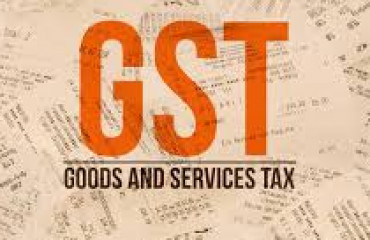
While the implementation of GST in India has been commendable, the time is ripe for the government to take note of some of the challenges which the business community at large has been facing, from blockage of working capital to duplicity of assessment proceedings.
India is set to complete five years since the implementation of the Goods and Service Tax Law. The journey of the first half decade of this landmark reform has undoubtedly been a rollercoaster ride with a mixed bag of hits and misses.
India is set to complete five years since the implementation of the Goods and Service Tax Law. The journey of the first half decade of this landmark reform has undoubtedly been a rollercoaster ride with a mixed bag of hits and misses.
During this time, India has witnessed changes in effective tax rates and improved supply chain efficiencies. A tax regime founded on a technology-based monitoring system through e-returns, e-invoices, and e-way bills has been one of the biggest achievements of GST in India. It would also be important to laud the success of the Centre-State partnership under the aegis of the GST Council which has ensured that all policy decisions are implemented seamlessly across states.
While the implementation of GST in India has been commendable, the time is ripe for the government to take note of some of the challenges which the business community at large has been facing, from blockage of working capital to duplicity of assessment proceedings.
Here are the five areas that could be reviewed for optimising GST efficiencies:
Modernising the Input Tax Credit (ITC) system and unblocking working capital
Several sectors are burdened with accumulated ITC owing to several factors including availability of credit attributable to input services to the traders, seasonal businesses, long gestation periods, inverted duty structure etc. One suggestion that could help avoid such precious working capital from getting blocked, could be for the Central GST (CGST) pool made fungible across states. Companies having central GST balance in one state should be able to utilise the balance in another state.
Another method that the government could consider is allowing conversion of the accumulated input tax credit into tradeable scrips in the market. This would help free up the working capital and mobilise unproductive assets in the financial statements of businesses.
Group companies having multiple registrations across states often face issue of accumulation of credit in one state and cash outflow in other states owing to their business structure. It would also help if credit across entities in a group structure could be made fungible to help manage working capital and improve cash flows.
Simplifying and rationalising of ITC provisions
GST continues to carry vestiges of the erstwhile regime in terms of credit restrictions. The GST laws have specific restriction on construction of immovable property, despite such expenses being incurred for a taxable output service. Companies incur huge commercial investments in warehousing and logistics, large factories across sectors. Denial of such credit adds to the cost of doing business. Hence, it is imperative that the government considers permitting such construction related input tax credit.
Streamlining of audits, assessments, investigations etc
In recent times, there has been a surge in summons issued by GST authorities to top management of companies. While the intention is to plug evasion, genuine companies have also come under the radar of investigating authorities, causing undue hardship. In most cases, investigating authorities pick up issues that are revenue neutral in nature or based on contrary advance rulings available across states. There is also lack of uniformity in the details and manner in which information and documents are sought during audits and assessments. There is thus a need for issuance of detailed SOPs for processes to be followed during summons and investigations, manner in which details are sought during audits and cross empowerment of centre and state to ensure uniformity and ease of operations for taxpayers.
Dispute resolution
A National Bench of Advance Ruling was proposed to be set up to resolve conflicting rulings rendered by various states. However, this body is yet to be formed. In the interim, the GST Law Committee should consider proactively reviewing areas with such conflicting rulings and proactively clarify to avoid continued litigation and a pile-up of cases at High Courts.
Further, even as we are approaching the 5-year mark, GST Appellate Tribunals have not been set up and there seems to be no clear visibility on that till date.
Expansion of TAX network
With petroleum outside the ambit of GST, a large part of the economy is still outside the tax net. A lot is expected out of the exercise currently being undertaken by the Group of Ministers (GoM) set up by the Council and chaired by Mr Basavarj Bommai, the Chief Minister of Karnataka.
Conclusion
Therefore, while GST has helped achieve significant changes and objectives of a unified indirect tax regime, in the backdrop of 5 years of GST and the increasing audits/ investigations, the journey towards a "good and simple tax" will only continue. There is a need for balancing revenue augmentation measures and ensuring ease of doing business for taxpayers. A change in mindset coupled with a hard look at reforms will go a long way in providing further thrust to India's economy as we continue on this road to recovery, post the pandemic.
